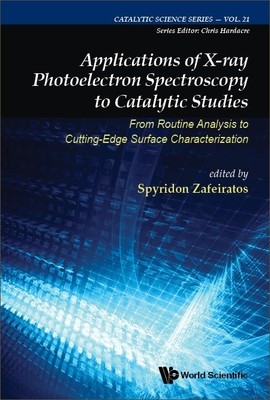
- We will send in 10–14 business days.
- Publisher: World Scientific Publishing Europe Ltd
- ISBN-10: 1800613288
- ISBN-13: 9781800613287
- Format: 15.2 x 22.9 x 3 cm, kieti viršeliai
- Language: English
- SAVE -10% with code: EXTRA
Applications of X-Ray Photoelectron Spectroscopy to Catalytic Studies: From Routine Analysis to Cutting Edge Surface Characterization (e-book) (used book) | bookbook.eu
Reviews
Description
XPS has become a mature technique and automated XPS facilities can be found in industry and in universities all over the world. This transformed XPS from an advanced characterization method for dedicated research, to a rather standard analysis technique of surface analysis. The catalyst's surface state is probably the most prominent factor that influences the catalytic performance. It is therefore no surprise that XPS has become an indispensable tool in studies of solid catalysts. It has been directly used to investigate issues such as the surface composition of the active catalyst and the reaction and deactivation mechanisms. Several excellent essays describe in detail the theoretical and practical aspects of X-ray photoelectron spectroscopy.The objective of the book is to provide a comprehensive overview of the current status and future perspectives of X-ray photoelectron spectroscopy dedicated to catalytic applications, including thermal catalysis, electrocatalysis, and photo(electro)catalysis. The book contains 13 chapters, starting with the necessary introduction of the technique background, including basic phenomena and instrumentation aspects. The second part of the book focuses on the presentation of long-established applications of the technique such as XPS studies of model catalysts. In the last part, the book describes relatively recent developments of this method for cutting edge surface characterization mainly using synchrotron X-ray radiation.
EXTRA 10 % discount with code: EXTRA
The promotion ends in 22d.06:43:20
The discount code is valid when purchasing from 10 €. Discounts do not stack.
- Publisher: World Scientific Publishing Europe Ltd
- ISBN-10: 1800613288
- ISBN-13: 9781800613287
- Format: 15.2 x 22.9 x 3 cm, kieti viršeliai
- Language: English English
XPS has become a mature technique and automated XPS facilities can be found in industry and in universities all over the world. This transformed XPS from an advanced characterization method for dedicated research, to a rather standard analysis technique of surface analysis. The catalyst's surface state is probably the most prominent factor that influences the catalytic performance. It is therefore no surprise that XPS has become an indispensable tool in studies of solid catalysts. It has been directly used to investigate issues such as the surface composition of the active catalyst and the reaction and deactivation mechanisms. Several excellent essays describe in detail the theoretical and practical aspects of X-ray photoelectron spectroscopy.The objective of the book is to provide a comprehensive overview of the current status and future perspectives of X-ray photoelectron spectroscopy dedicated to catalytic applications, including thermal catalysis, electrocatalysis, and photo(electro)catalysis. The book contains 13 chapters, starting with the necessary introduction of the technique background, including basic phenomena and instrumentation aspects. The second part of the book focuses on the presentation of long-established applications of the technique such as XPS studies of model catalysts. In the last part, the book describes relatively recent developments of this method for cutting edge surface characterization mainly using synchrotron X-ray radiation.


Reviews